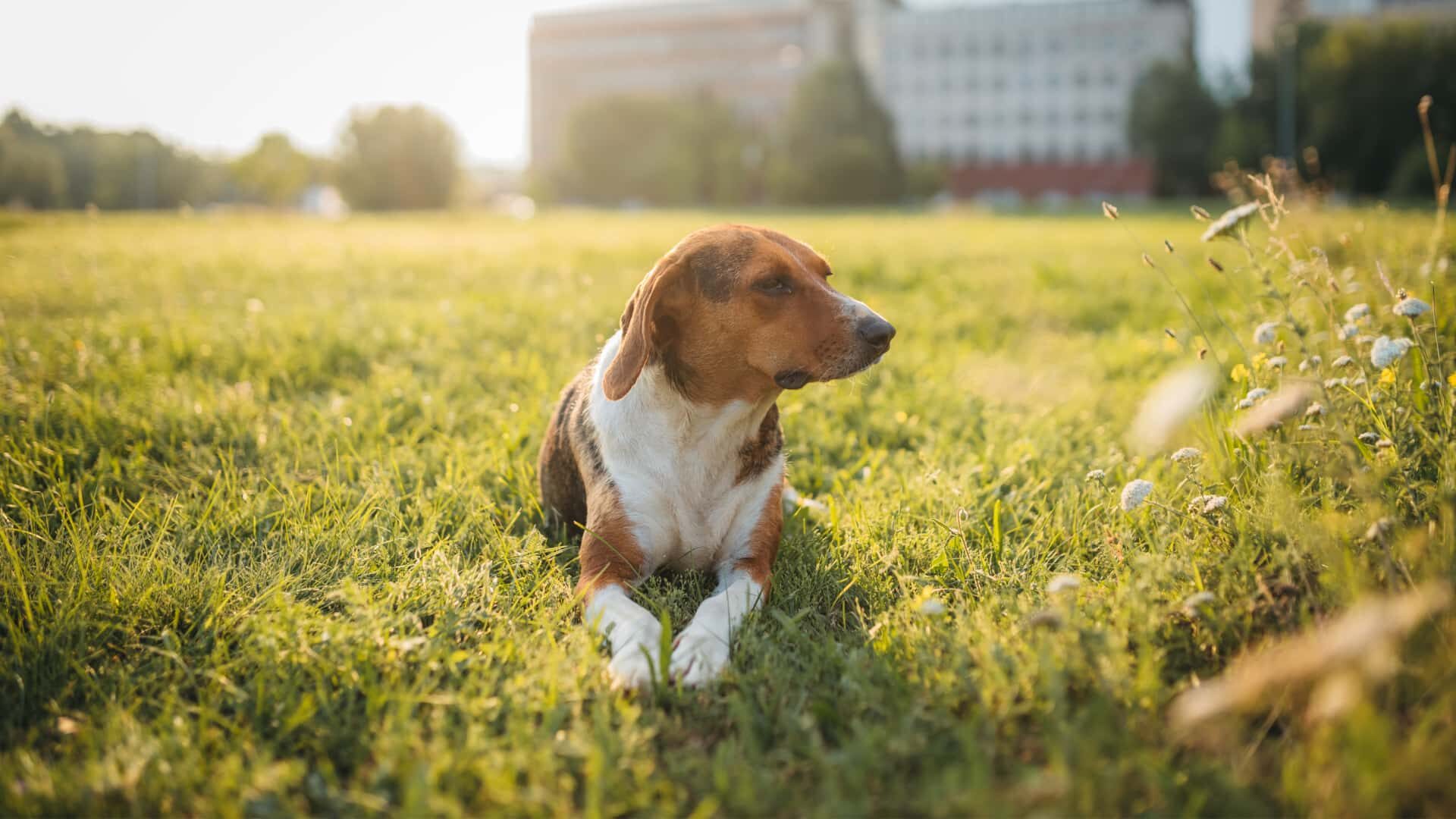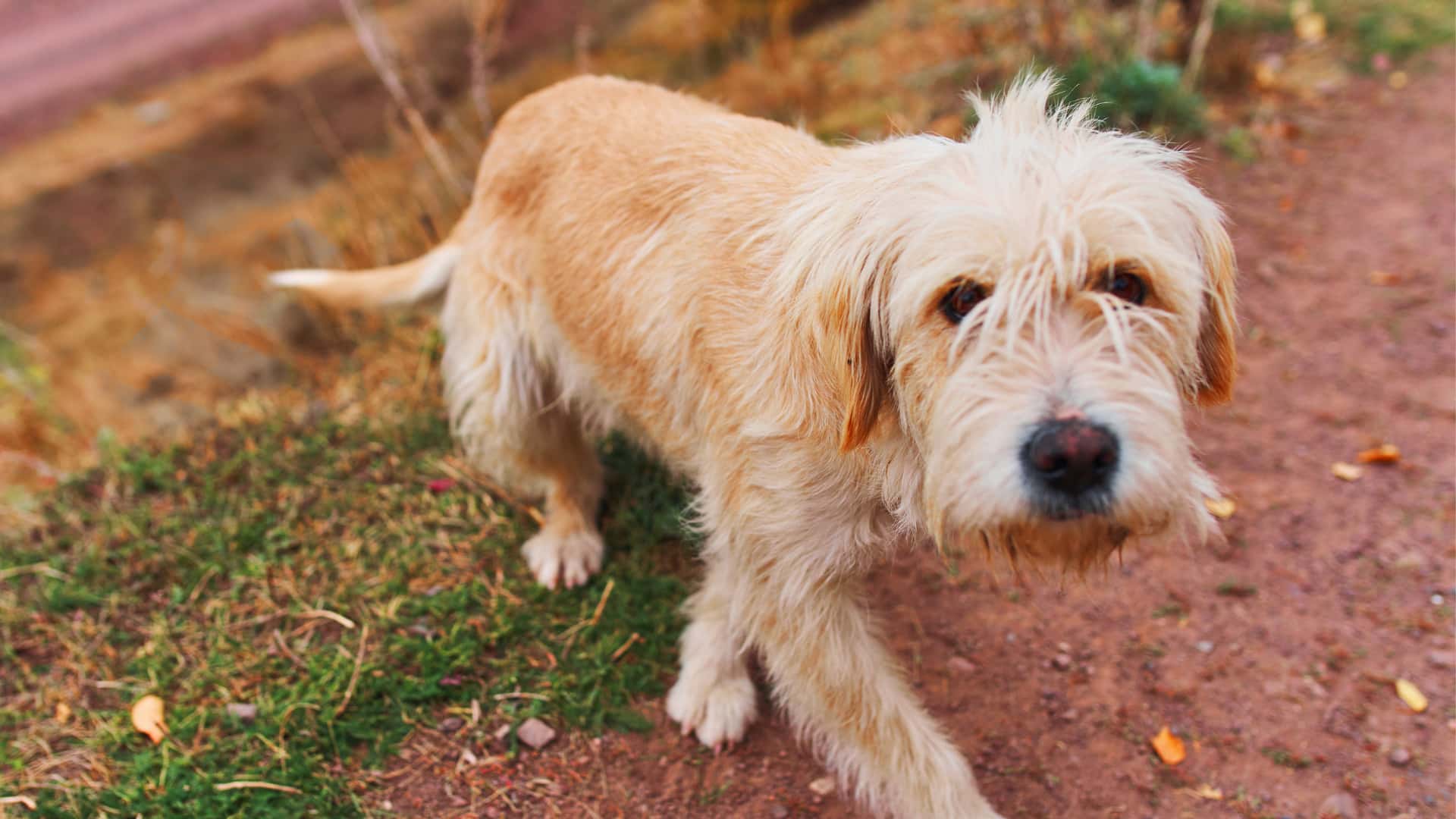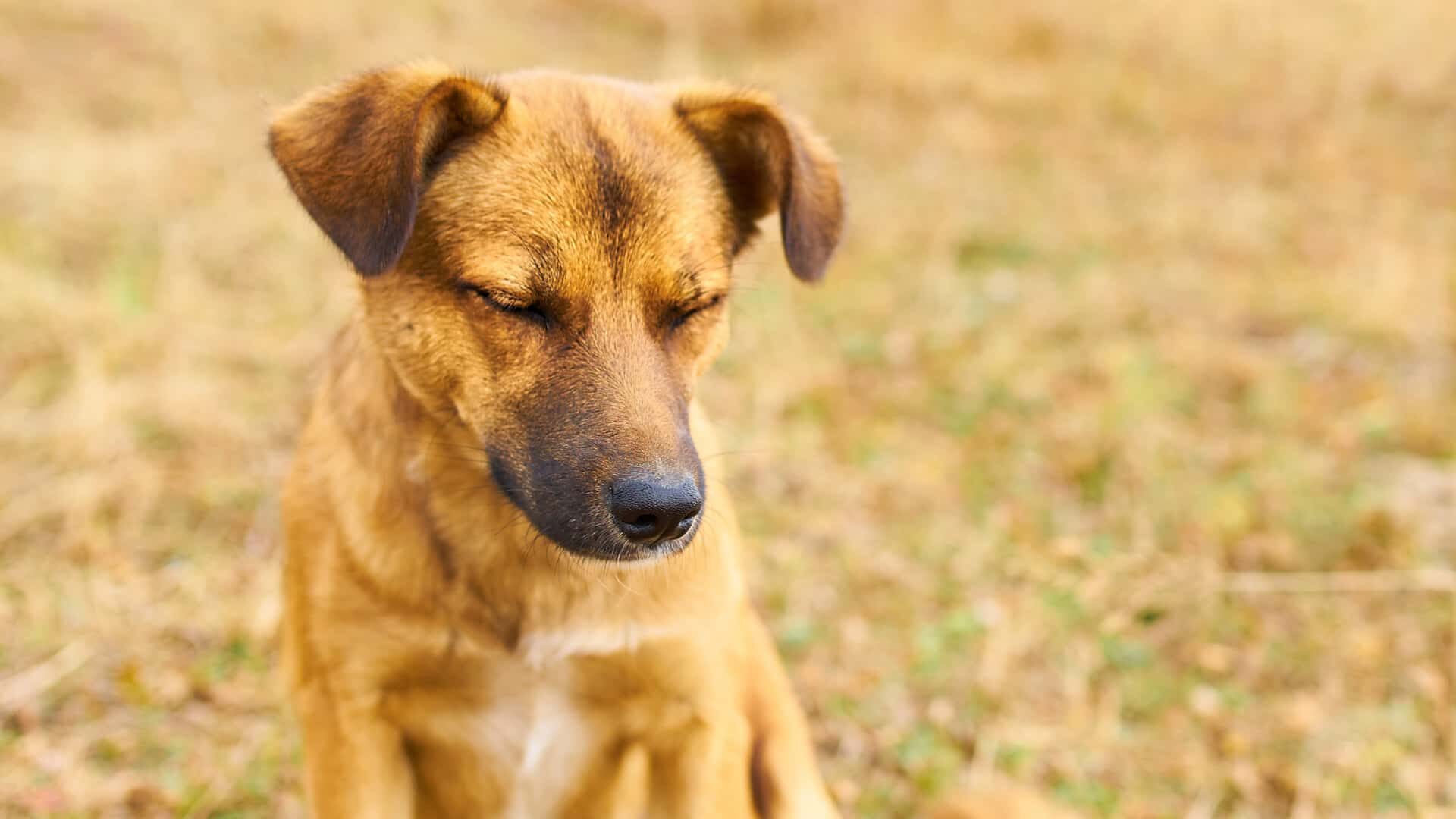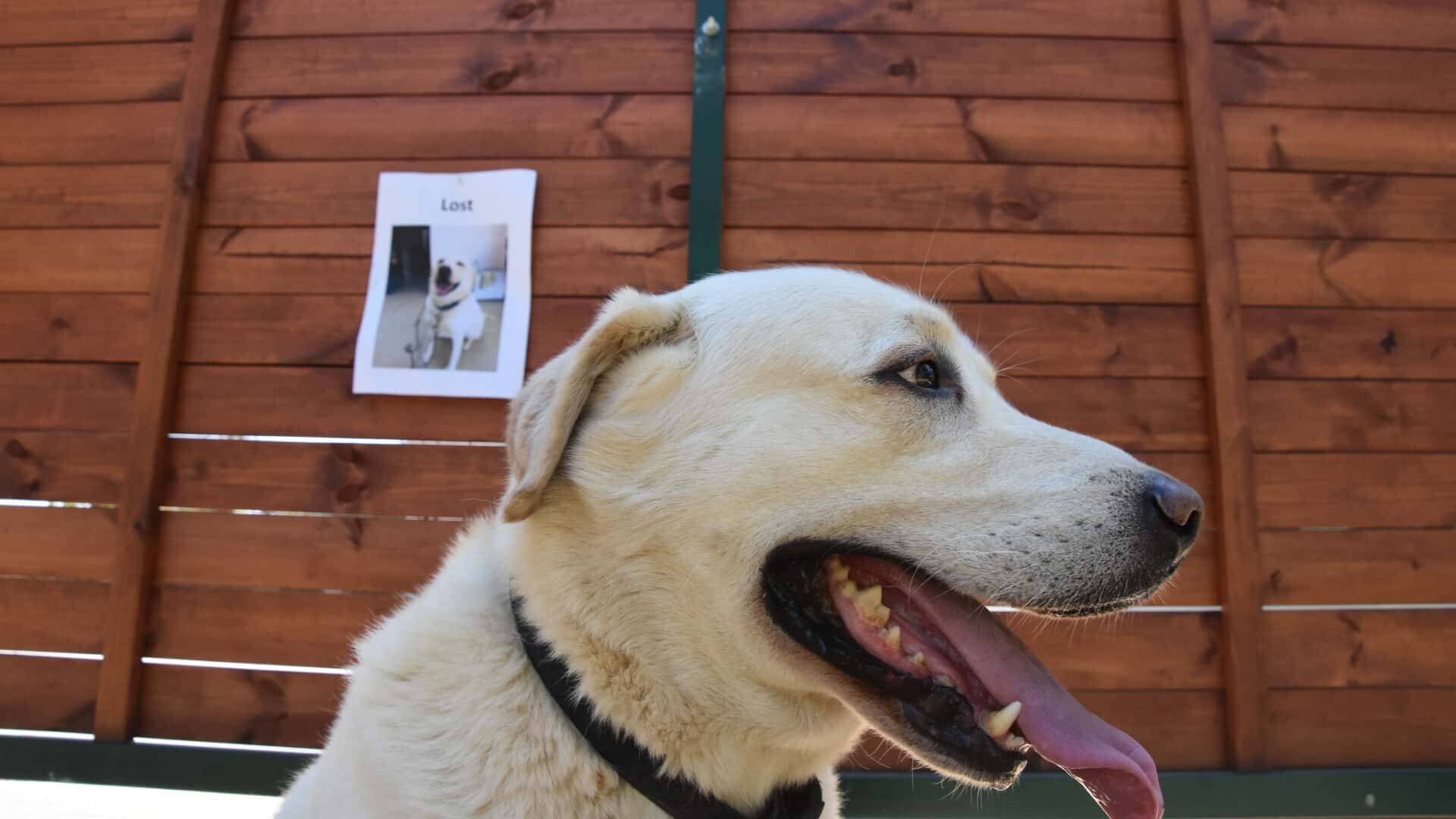Someone recently found a dog without a collar and is trying to figure out what he/she should do with the dog. To make sure that there’s no identifying microchip embedded in the dog’s body, he/she decided to shave its hair to see if there are any marks or identification marks on its skin.
However, they found out that they are not allowed to shave the dog as rescues & shelters will take away the animal if they find out.
How to approach a lost dog?

Don’t grasp the dog’s collar right away if you encounter a dog on the loose. Getting the dog to safety is critical, but so is ensuring your own safety. A missing dog may be afraid, nervous, or wounded, so it’s important to keep an eye out for them.
The first step is to get familiar with the dog’s nonverbal cues. Approach gently and with your body tilted to the side of the dog seems calm. This approach is less threatening than a head-on one. Squat down and put your hand out so the dog can get a whiff of your scent.
To assist the dog feel more at ease with you, keep your body slanted and your gaze aside. Reach for the collar only if the dog seems to be content to remain at your side. Alternatively, you may attach a leash or make a temporary slip lead out of a piece of rope and attach it instead. Treats may also be used to get the dog closer to you.
Do not attempt to grasp or control the dog if it does not approach you voluntarily or seems hostile. Watch out for tight posture, bared teeth, and hair standing on end as some of the warning signs.
Make sure you understand that just because your dog’s tail is wagging doesn’t indicate they’re going to be nice. If you have any worries about the dog’s conduct, contact animal control or the police department so that they may securely remove the canine and deliver it to the correct authorities.
If you’re unable to approach the stray dog securely, at least snap a picture or record a video of him. By taking photos, you will be able to describe the dog more accurately than if you rely just on your recollection, which might be important in an emergency situation or if you are looking for possible owners via flyers or online ads. Post a picture or video of the dog on social media, along with a description of where you spotted it, to help the owner track down their lost pet.
What to do if you have found a dog without collar?
Losing a dog is a concern for any dog owner. There’s little question that you have a strategy in place to find your dog. But what if you discover someone else’s puppy? What should you do? Your first instinct will naturally be to assist reunite the dog with its owner, but how can you ensure that the dog is returned to the correct family?
And how can you keep your dogs safe around a discovered dog if you decide to bring it into your house while you wait for it to be located? When a dog goes missing, knowing the answers to five crucial questions may make all the difference in the world.
If you’re able to confine the stray dog, you’ll need a place to keep him. As a last resort, you may keep the dog until you go to a nearby shelter or until the owner gets back to you. You must ensure the safety of your family, other pets, and the missing dog, no matter how short-term or long-term the situation is.
The missing dog should not be allowed to interact with your other pets until a veterinarian has given it the all-clear. Stress for the animals involved is one thing, but the newcomer may not be fully vaccinated or be carrying a disease that might infect yours. It’s possible to deal with parasites like fleas or even ringworm. The dog might be kept in a different room in your home or in a gated yard until you can get them to a shelter or a vet.
How to keep a lost dog safe?
Now that the stray dog has become familiar with you, it’s time to put measures in place to ensure its well-being. Find a homemade leash and, if you’re able, provide food and water for the stray dog.
Finally, double-check the dog for an ID tag; you may have overlooked anything from a distance. In order to scan for a microchip, take the dog to your veterinarian or local animal shelter after you’re confident it doesn’t have one. Most animal hospitals and clinics provide this service and even have scanners for it.
You should call the police if you find a missing dog that does not have a microchip. Possibly, they’ve already begun searching for the canine of interest! You may also make a “dog found” poster to spread the message.
Repost your dog-found post to social media sites like Facebook, Instagram, Twitter, and Reddit, and ask your friends to do the same. The Boost by Pet Alert feature on Facebook may help your dog found poster reach a broader audience.
How to comfort a lost dog?
Friends and family members who lose a pet are likely to feel a deep sense of loss and sorrow. Considering how much you care about those who have lost a pet, we’ll do our best to support you in your efforts to comfort those left behind in their sadness.
Keep in mind that what you want to hear may not be the same as what your buddy wants to hear while he or she grieves. Be there for your buddy as they go through the stages of grieving by asking if they need anything and providing open-ended inquiries about their dogs’ life.
Also, you may be new to this, so be aware that certain things, although they seem good, may really be counterproductive.
Just being there for your buddy is the most crucial thing you can do while they are dealing with the death of a pet. “What can I do for you?” or “I’m sorry for your loss; I’m here if you need me” are good responses to begin with, according to Bergland.
As part of the mourning process, Stewart recommends talking to a friend or loved one. Their spirits might soar as you listen to them reminisce or relate tales of their beloved pet’s life and death. To be a good friend, you may ask questions that elicit memories and sometimes even tears.
How to help a stray pet?

Stray dogs or cats are on the streets for many reasons. It could be because of the lack of food or bad treatment from the owner, or it could just be that they don’t have a home to go back to. It is sad to say that there are many strays all over the country that have never known love and care. But there’s good news. You can help stray pets survive by providing them safe shelter and food.
1. Take precautionary measures
Don’t scream to a stop if you notice a dog or cat roaming free in a public location while driving. This might put you and the animal in danger, as well as frighten it. Take a moment to pull over as soon as possible, or take note of the animal’s whereabouts and appearance, and either return to the area later or contact local animal control officials.
Before approaching a stray dog or cat, pay attention to its demeanor. Through their bites, animals may spread rabies. Drooling, aggression, fear, or balance issues are all indicators that your pet may be suffering from rabies. You might attempt to entice the animal into your vehicle or pet carrier if it seems healthy and sociable.
2. Secondly, look for a Microchip
If your wandering animal doesn’t have the typical collar ID tags, don’t assume it has no owner. For a variety of causes, these tags might come loose from their collars and leave animals unable to be identified as pets. Many pets, on the other hand, are implanted with microchips. They include all the information needed to identify their owners.
Obtain a microchip for the animal at any local shelter or veterinarian facility. Employees at these establishments may use an RF scanning gadget to check the pet’s upper body for parasites and disease. The scanner will get ID information from a microchip inserted in the body. This information may subsequently be found in an online national pet registry by the employee.
3. Have the animal sickly checked
In their travels, stray dogs and cats may come into contact with a wide range of parasites and pathogens. These tests and measurements, which are required for all animals in order to assure their long-term health, may not have been carried out on certain wild animals. Regardless of how well your stray seems, make an appointment with a veterinarian to get it checked out.
For example, your veterinarian will look for signs of insect infestation, skin disorders, and eye or ear injuries that may need medical attention. For further illnesses or parasites, blood, urine, and fecal testing are available. This allows the veterinary staff to deliver the necessary vaccines and dewormings.
4. Educate yourself on the care of an adopted pet
Be sure you know how to take care of the animal before you decide to bring it into your home as a pet. Consistent wellness care is essential for the well-being of pets like dogs and cats. If you want your pet to get along with your family, strangers, and other pets, you may need to teach or socialize them.
Talk to your vet about the fundamentals of pet ownership. For example, how to feed your pet correctly, how much exercise it should get each day, how to teach your pet, and when it’s time for a wellness inspection are all things you’ll learn from this course.
Make an appointment with the Pet Medical Center of Vero Beach if you encounter a stray cat or dog. A microchip may be checked, the animal’s health checked, and any required treatment administered.
5. Things to keep in mind
For those who are undecided about helping an animal, you encounter by the road, here is a last piece of advice: Do everything you can to aid the animal. Put yourself in the shoes of someone who finds your pet and discovers it is without its collar. What would you want them to do? What you’d want them to do is take your pet to the vet and attempt to locate you.
Even if they’ve never lost a beloved pet before, those who come upon a dog or cat in the wild may assume that its finder knowingly abandoned them or failed to keep them properly contained at home. However, anybody might be the victim of an accident. The pet’s anxious owner might be searching everywhere for their cherished companion.
To sum it all up, be brutally honest while answering the following questions: Yes, I would want to bring them into my family. Will you be able to give them back to their rightful owner if they show up after you’ve formed a bond with them? For those who can’t, the best alternative is to call animal control or take the animal immediately to a shelter.
Where to take a lost dog?
Lost dogs can be found in many places. They are often taken to the Humane Society or to an animal shelter. Animal shelters may also take lost dogs if they have room, but they will not be able to keep them for long periods of time.
The Humane Society and Animal Control will hold lost dogs for up to three days before putting them up for adoption. If you find your dog in the first few hours after he went missing, then you may be able to get him back by taking him directly home.

If you find a lost dog, the first thing you should do is try to find its owner. It’s amazing how many people simply think that someone else will contact them about their missing pet, even if it seems clear to them. If a dog has an owner who takes them for frequent walks on the same route, they may have gotten lost while on one of those outings.
If you find a stray dog, the first thing you should do is try to locate its owner. However, if this is not possible, here are some tips on what to do.
Take the dog to a vet. If the dog has a tag or microchip, the vet can scan it and contact its owner if necessary. If there is no tag or microchip and you are unable to find out where it came from, take it to an animal shelter, where it will be cared for until its owner is found.
Contact local police and animal welfare organizations. These will have details of lost pets and may be able to help reunite you with your missing dog.
Check online listings of lost dogs. There are many websites that list lost and found pets: try searching under ‘lost dogs’ or ‘found dogs.
Is it possible to alter the lost dog’s owner?
There are two ways to do this. The first is to try and find out who the owner is by looking at the dog’s microchip or by checking the local lost and found listings. This will probably not be successful unless the dog has a microchip and you live in an area where there are lost animal listings. Even then, it may not work if the owner doesn’t report their dog missing.
The second way is to take your time and get to know this dog on a personal level so that it bonds with you instead of its original owner. This can take weeks or months and will require patience on your part as well as from the dog.
The first thing you should do is take your dog to a vet to be checked. If you can’t afford it, contact the humane society or rescue group in your area; they may be able to help you out.
If your dog has an electronic chip embedded under his skin, contact the chip company and make sure they have your current address and phone number.
The best thing to do if you find a stray dog is to take him or her to the closest animal shelter or animal control facility. The staff there will know how best to care for the animal and will put out notices about her so that she can be reunited with her owner.
You may also want to contact local newspapers, radio stations, and TV stations about the missing dog — something as simple as putting up posters with information about where she was found could help bring her home!
Watch How to find a lost dog | Video
Do dogs need collars to be kept?
If your dog goes lost and you don’t have their collar and tags on them, you might incur a hefty fine from your local animal control department since it is generally a legal requirement. This may not be the case in rural regions, but it is common law in most densely populated areas.
If I find a dog, may I keep it?
It may be tempting to just rename your pet and adopt him into your family, but this is not the proper course of action, and in many countries, it is illegal. Finding a stray animal? Check with your local animal control agency to see if there are any regulations dictating what should happen next.
Do you know how to identify when you’ve found a stray?
A stray dog is often reserved and unapproachable. If you attempt to approach them, they will strive to maintain their distance from you. Your attempts to get them nearer will be futile, no matter how pleading you may be.
Where can I get up and personal with an unidentified dog?
But do it in a manner that is acceptable for dogs. Keep your pats to the dog’s torso, side, neck, back, or chest, rather than all over the body.
To make it even more enjoyable, find out if the dog’s owner has a preferred area to pet the animal. Don’t try to reach above the dog’s head, which may be dangerous.
During the night, how should you handle an unwanted dog?
If you come across a stray dog at night, the most important thing is to keep him under control: He could need to spend the night with you. There is generally a shortage of personnel at animal control facilities. Thus weekend and after-hours calls are saved for emergencies rather than stray intake.
Conclusion
If you find a dog without a collar, always check for an identification chip first. If there’s no chip, it’s highly likely that the dog has either escaped from home or is a stray. Either way, it’s a good idea to bring the dog to the nearest shelter to ensure its owner can be found. Chances are, the owner is searching for his/her dog too.
Basically, if you’ve found them abandoned, they are likely yours to keep. However, if you had had a dog before that escaped out of your fence or died, then you can’t keep the dog if it looks too much like your previous dogs.
There’s also the concern that if you don’t live in a rural area and let the dog roam freely (to the point where it has little fear of humans), it might be one of those aggressive stray dogs. Still, all in all, if it seems healthy and friendly and isn’t acting like a feral dog, I would say yes, you can keep it.
How do you feel about scruffing your dog?
Bottom up
Please comment below about your ideas and share this “Found a Dog Without Collar: What Should I Do Now Guide” article with your friends.
Stay tuned with our website to find out more exciting stuff. Don’t forget to check out our previous articles too.
Until the, Read about, Is It Safe to Grab My Puppy by By Scruff: Guide with Risks






